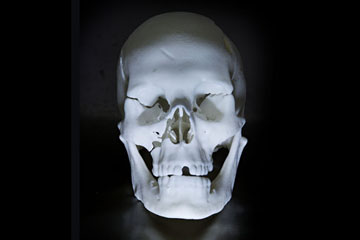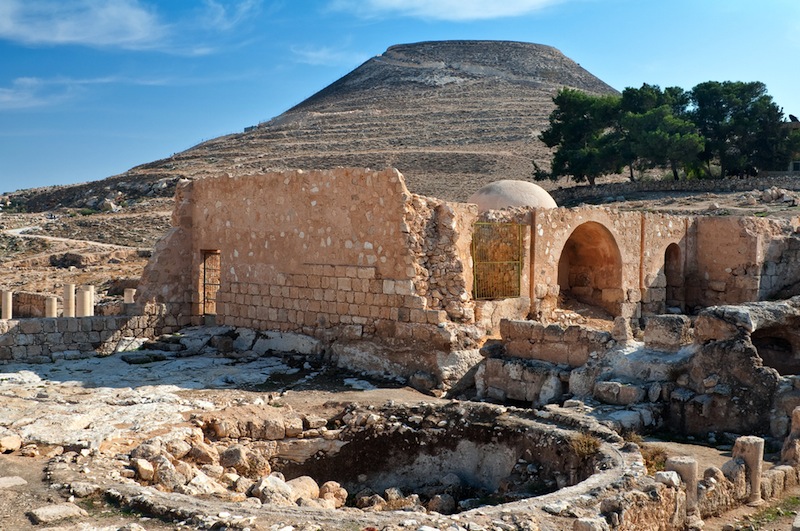
Archaeologists dig through the faint traces of the past to learn more about human history. And 2013 was a big year for new archaeology finds.
From royal tombs to the mysterious vanished inhabitants of Europe, here are some of the strangest and most exciting archaeology finds of the year.
1. Richard III bones
In February, researchers announced a grave suspected of harboring the bones of King Richard III did indeed hold the royal's remains. The tomb was found under a parking lot in Leicester, England. Since then, a host of studies have revealed more about the once-reviled, crippled king's life and death. It turns out Richard III may have been a control freak who spoke with a lilt and was subjected to painful scoliosis treatment. And after several bruising head injuries, the king was buried in a hasty grave without any ceremony, analysis of the skeleton revealed. [Images: Digging up King Richard III's Grave]
2. Royal squash?
Last year researchers announced that a gourd emblazoned with images from the French Revolution contained the blood of the beheaded King Louis XVI of France. Legend had it that a bystander at the execution sopped up his blood with a handkerchief and then stashed the bloody relic in a decorative squash. Blood from the squash seemed to match blood from a head reputed to be that of King Henry IV, Louis' relative and also a member of the Bourbon royal lineage.
But a study in 2013 cast doubt on the royal origins. The study revealed the male lineage in the head and the different one in the bloody squash could not have come from the Bourbon line; that the two men were not related; and that whoever bled on the handkerchief likely had brown eyes, not baby blues like Louis XVI.
Sign up for the Live Science daily newsletter now
Get the world’s most fascinating discoveries delivered straight to your inbox.
3. Prince … oops!
It made big news when it first came out: Archaeologists had unearthed the tomb of an Etruscan warrior prince, carrying a lance and lying next to his wife. Only it turned out that the archaeologists made a mistake: A skeletal analysis showed the Etruscan warrior prince was a princess, and her lance was likely a sign of high status, not warlike ways. The finds revealed the trouble with making assumptions based on the objects found in tombs and graves everywhere. [In Photos: The Tomb of an Etruscan Prince]
4. Oldest rock art
In a dried-up lake in the Nevada desert, archaeologists unearthed signs of ancient rock art that dates to between 10,500 and 14,800 years ago. The rock art is the oldest in North America by several thousand years. But much remains unknown about the enigmatic lines and grooves carved into the limestone near Winnemucca Lake. Scientists aren't sure about the meaning of the rock art, though the images do seem quite similar to the second-oldest rock art in North America, which was found in Oregon.
5. War's destruction
On the archeological front, some of the news was devastating. Syria's civil war has imperiled its rich archaeological heritage, and reports of damage continued to trickle out this year. Satellite imagery revealed that the ancient Roman city of Apamea was so riddled with looting holes it looks like "the surface of the moon," one archaeologist told LiveScience in September. The ancient city of Ebla, which contains a trove of thousands of cuneiform tablets, was thoroughly looted. And fighting in Aleppo and Beirut has damaged ancient mosques in the region.

6. Herod's tomb?
The tomb once thought to be Herod's may not be, according to two Israeli archaeologists. A tomb at the Herodium, a complex built by the king of the Israelites about 2,000 years ago, was too shabby and poorly constructed to hold the man who wanted to be laid out on a gold bed draped with fine fabrics and whose funerary procession was thronged by an entire army, the researchers argue. If the archaeologists' theory is true, then the resting place of King Herod is a mystery yet again. [The Holy Land: 7 Archaeological Finds]
7. Stonehenge hunting grounds
Stonehenge has inspired speculation for millennia. But this year researchers revealed a new theory on why the enigmatic megaliths were raised: The area around Stonehenge was a sacred hunting ground where wild aurochs and other beasts congregated long before the mysterious monument was erected. Hundreds of animal bones and thousands of stone tools found near the site suggest humans congregated from far and wide to feast and butcher wild beasts about 5,000 years before the first stones were raised.
8. Royal tomb
A 1,200-year-old, pristine royal tomb was uncovered in Peru. The grave held the bodies of three queens who ruled the Wari Empire, which flourished between A.D. 700 and 1000, long before the Incan site of Machu Picchu was erected. The tomb was still sealed and buried under 30 tons of loose stone fill when the archaeologists discovered it. The royal mausoleum held a rich assortment of gold and silver finery and the remains of possible human sacrifices.
9. Vanishing Europeans
The ancient inhabitants of Europe mysteriously vanished about 4,500 years ago, a genetic analysis revealed. The analysis of 7,500-year-old skeletons unearthed in Central Europe suggests that the genetic makeup of the continent was dramatically different back then. These ancient people spread out from Turkey and the Near East with the agricultural revolution, supplanting the hunter-gatherer lifestyle that prevailed beforehand. But about 4,500 years ago a group of people with different genetics replaced these individuals. No trace of their lineage remains in modern Europeans. Exactly what happened has remained a mystery.
10. Iceman's relatives
Some Europeans may be part Iceman. The astonishingly well-preserved mummy ofÖtzi the Iceman, who was found in the Italian Alps, may have at least 19 living relatives, a new genetic analysis revealed. The researchers discovered these living relatives by accident, while completing a genetic study of people living in the Italian Alps. Though it's possible one of these people may descend in an unbroken line from Ötzi, it's much more likely that he's only a distant relative. And the Iceman may have more relatives in the region.
Follow Tia Ghose on Twitter and Google+. Follow LiveScience @livescience, Facebook & Google+. Original article on LiveScience.

Tia is the managing editor and was previously a senior writer for Live Science. Her work has appeared in Scientific American, Wired.com and other outlets. She holds a master's degree in bioengineering from the University of Washington, a graduate certificate in science writing from UC Santa Cruz and a bachelor's degree in mechanical engineering from the University of Texas at Austin. Tia was part of a team at the Milwaukee Journal Sentinel that published the Empty Cradles series on preterm births, which won multiple awards, including the 2012 Casey Medal for Meritorious Journalism.










